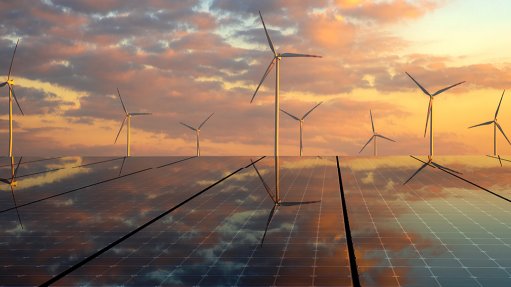Advanced Solar Asset Monitoring Critical to Track Energy Generated by Solar Assets in SA
This article has been supplied by the author and has not been written or solicited by Creamer Media. It may be available only for a limited time on this website.
By Oliver Johnston, CEO at SOLINK
South Africa is currently experiencing its very own energy revolution, inching further away from conventional energy practices towards more sustainable and renewable sources of power. Leading the way in this transformative shift has been the widespread transition of South African homes and businesses to solar power specifically - at record-breaking levels in 2023.
Solar imports reached a new threshold this year, with R8.4 billion in imports within the second quarter of 2023, more than double the amount imported in the first quarter. In fact, the value of imports in the first half of 2023 now exceeds the entire value for 2022, which was R5.6 billion. From January to end-August 2023, over R12 billion in solar modules had been imported by South Africa, revealing a significant change to our country’s energy landscape.
Renewable energy presents businesses and entrepreneurs in our country with a rare opportunity to secure an asset with the potential to safeguard the livelihoods that remain dependent on a stable and cost-effective power supply today. According to a study conducted by the audit company PriceWaterhouseCoopers (PWC) last year, the firm was able to project that load shedding could cost South Africa 350 000 jobs. This bears significant consequence in a country with the highest unemployment rate in the world - we simply cannot allow our national energy crisis to threaten job creation or employment figures at this stage.
While the rate of solar imports should offer some consolation, South African business owners now face new complications and challenges that require a strategic solution if renewable energy is going to protect jobs for us in the long-term.
Strategic Management of Solar Assets
The rush to adopt solar energy may have peaked in 2023, but it has been in the pipeline for years. Over the past decade, our country has witnessed a substantial increase in solar capacity, rising from approximately 260 megawatts in 2012 to 6 326 megawatts in 2022. Despite the global push towards renewable energy for environmental reasons, the primary motivation among South Africans certainly stems from the essential need for reliable and cost-effective electricity and a desire for energy security. This movement has been driven by unprecedented levels of load shedding in 2023 as well as significant cost escalations of power supplied by Eskom.
Tapping into this renewable energy potential goes beyond the installation of solar panels, batteries and initial investments; it necessitates strategic management.
The latest in renewable energy asset monitoring technologies can offer our business owners and entrepreneurs a practical solution to several challenges impeding the optimal performance of their costly renewable energy assets. In fact, the effective monitoring and management of renewable energy assets will remain a critical undertaking for those who have invested in solar and battery technology, as it lays the foundation for successful, long-term project returns and optimised energy supply.
These technological advancements and sophisticated asset performance tracking systems not only contribute to the financial success of the projects they monitor, but also promote transparency and accountability among service providers and asset owners in our country.
Performance Management of Solar Investments
Another substantial risk faced by business owners looking to invest in our expanding market remains the rise of unreliable and dishonest installers or suppliers. Due to this unavoidable challenge, it is important that business owners make use of renewable energy monitoring technologies and systems that can assist with monitoring once their solar setup has been installed. This year alone, there have been numerous reports highlighting instances of fraudulent activities and installations that result in minimal or negligible output. This destroys any business owners’ capacity to protect the livelihoods that depend on a stable power supply in our country.
The best way to mitigate against this risk is to thoroughly audit the credibility of the company you are contracting beforehand, and ensure top tier equipment is installed. In addition one needs to look at the performance of their previous projects, just as they would with any other asset or investment, prior to its purchase.
Renewable energy monitoring technologies should always be secured and installed as part of any project installation, in order to provide businesses with a bird’s-eye view of the metrics behind the performance of their new solar asset. The latest technological advancements in renewable energy asset management systems are extremely useful, as they allow an individual to visualize and track solar performance, battery output and site irradiance, while assisting in the prevention of neglect and decay, which, at best, results in a low return on investment and, at worst, poses significant hazards such as electrical and fire risks.
Expense Management
What sets some of these advanced technologies apart is their nuanced understanding of South Africa's unique tariff structure. Unlike European alternatives, a select number of renewable energy monitoring technologies in South Africa have been crafted specifically for South African companies, taking into account the intricacies of the local energy landscape. This tailored approach is uniquely suited for load shedding, local tariff structures, and the integration of battery and generator systems. In a country where one size does not fit all, having tools designed for each individual business facility offers a significant advantage.
In fact, some of the leading systems are able to provide reports on your solar energy generation potential during a load shedding event—a scenario all too familiar to South Africans. In a country where power interruptions are not just inconveniences but a daily occurrence, this feature provides a strategic advantage. The same system can also flag an "energy wastage event" when there is not enough load available for all the generated solar power. This proactive feature helps prevent unnecessary waste and ensures that every bit of solar energy generated is effectively utilized.
The cost-effectiveness of these renewable energy monitoring technologies is further evident in their ability to provide visualized data that can be downloaded directly for consumption, reporting and budgeting by other software packages or accessed via an API. This flexibility allows for integration into broader energy and money management strategies for businesses and corporates across South Africa. The visualizations are not confined to individual assets; they extend over entire portfolios of load sites, buildings, or assets, providing a comprehensive overview of performance at both a micro and macro level.
Environmental Focus
The optimization of the performance and returns of renewable energy assets remains a critical need, not only for project success but also to decrease the load on traditional power grids like Eskom. Last year, the contribution of renewable energy technologies provided 7.3% of the total energy mix. South Africa's dependence on a carbon-heavy grid is a challenge that the widespread adoption of renewable energy technologies can aim to address head-on.
With instant access to data, renewable energy monitoring technologies can empower stakeholders to quickly address any concerns of underperformance. This real-time capability can be further fortified by penalty mechanisms, ensuring that solar contractors meet their yield guarantees and asset owners can optimize their projects' performance.
Renewable energy asset monitoring technologies in our country have already been installed at over 90 sites across the country, offering a testament to the urgency and effectiveness of this simple, yet smart solution for businesses in South Africa.
These advanced tracking systems offer an opportunity to truly revolutionize our energy landscape, in a manner that minimizes risk, ensures accountability and improves project returns. With the effective monitoring and management of renewable energy assets, South Africans can gain long-term project returns, visualize the performance of their solar & battery investments, cut costs in the long run and still manage to contribute to a greener and more sustainable country.
Comments
Announcements
What's On
Subscribe to improve your user experience...
Option 1 (equivalent of R125 a month):
Receive a weekly copy of Creamer Media's Engineering News & Mining Weekly magazine
(print copy for those in South Africa and e-magazine for those outside of South Africa)
Receive daily email newsletters
Access to full search results
Access archive of magazine back copies
Access to Projects in Progress
Access to ONE Research Report of your choice in PDF format
Option 2 (equivalent of R375 a month):
All benefits from Option 1
PLUS
Access to Creamer Media's Research Channel Africa for ALL Research Reports, in PDF format, on various industrial and mining sectors
including Electricity; Water; Energy Transition; Hydrogen; Roads, Rail and Ports; Coal; Gold; Platinum; Battery Metals; etc.
Already a subscriber?
Forgotten your password?
Receive weekly copy of Creamer Media's Engineering News & Mining Weekly magazine (print copy for those in South Africa and e-magazine for those outside of South Africa)
➕
Recieve daily email newsletters
➕
Access to full search results
➕
Access archive of magazine back copies
➕
Access to Projects in Progress
➕
Access to ONE Research Report of your choice in PDF format
RESEARCH CHANNEL AFRICA
R4500 (equivalent of R375 a month)
SUBSCRIBEAll benefits from Option 1
➕
Access to Creamer Media's Research Channel Africa for ALL Research Reports on various industrial and mining sectors, in PDF format, including on:
Electricity
➕
Water
➕
Energy Transition
➕
Hydrogen
➕
Roads, Rail and Ports
➕
Coal
➕
Gold
➕
Platinum
➕
Battery Metals
➕
etc.
Receive all benefits from Option 1 or Option 2 delivered to numerous people at your company
➕
Multiple User names and Passwords for simultaneous log-ins
➕
Intranet integration access to all in your organisation


















